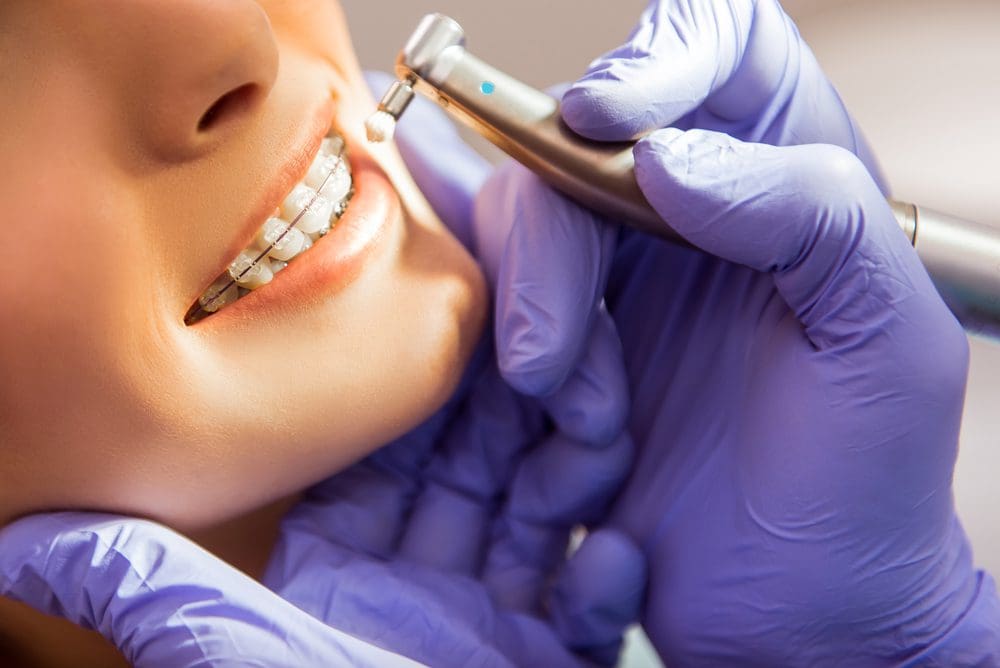Finding the Right Cumming Orthodontist for Your Braces and Aligners Requirements
Finding the Right Cumming Orthodontist for Your Braces and Aligners Requirements
Blog Article
Comprehensive Guide to Orthodontics Treatments for Dealing With Oral Misalignments
In the realm of orthodontics, the journey to achieving a perfectly straightened smile entails a myriad of procedures tailored to fix dental misalignments. From typical dental braces to undetectable aligners and even medical alternatives, the field of orthodontics provides a variety of remedies to resolve varying degrees of dental abnormalities. Recognizing the ins and outs of each procedure, including their devices, benefits, and possible downsides, is important in making notified decisions regarding one's orthodontic treatment. As we browse through the detailed overview to orthodontic procedures for fixing oral imbalances, the elaborate information of each approach will certainly unfold, shedding light on the course toward a useful and unified oral placement.
Orthodontic Procedures Overview

In addition to conventional dental braces and clear aligners, orthodontists might also advise other interventions like headwear, palatal expanders, or retainers to resolve certain placement problems (orthodontist). These procedures are customized to each individual's special requirements and may entail a mix of treatments to accomplish the wanted outcomes. Routine modifications and tracking are vital components of orthodontic therapy to make certain development is on track and to make any type of necessary adjustments along the method. By going through orthodontic procedures, individuals can not just achieve a straighter grin but also boost their total oral wellness and function.
Traditional Braces: Just How They Function
When thinking about orthodontic therapies for oral misalignments, traditional braces attract attention as a tried and true technique for remedying teeth placing. Traditional braces consist of brackets, wires, and bands that interact to apply continuous pressure on the teeth, gradually relocating them into the preferred placement. The braces are connected to the teeth making use of an unique adhesive, and the cords are threaded through the brackets. By changing the tension of the wires, orthodontists can regulate the instructions and force put on each tooth, directing them into correct positioning over time.
As stress is used to the teeth through the dental braces, the bone surrounding the teeth is reshaped to support the brand-new tooth positions. People will certainly need normal changes at the orthodontist's office to guarantee the braces continue to use the appropriate pressure for efficient teeth motion.
Unseen Aligners: Disadvantages and pros
Invisible aligners use a practical and very discreet choice to standard dental braces for remedying oral YOURURL.com imbalances. These clear, custom-made trays are virtually invisible when used, making them an attractive visit site choice for people seeking an extra visually pleasing orthodontic treatment. Among the primary benefits of unseen aligners is their removability, permitting for simpler maintenance of dental health contrasted to typical braces. People can remove the aligners before eating or cleaning their teeth, decreasing the danger of food obtaining embeded the appliance and simplifying the cleansing process.

Surgical Orthodontic Options
Surgical interventions in orthodontics present practical options for attending to complex oral misalignments that might not be successfully fixed with conventional orthodontic therapies. While unnoticeable aligners and typical dental braces can fix several orthodontic problems, particular situations call for surgical treatment to attain optimum results. Surgical orthodontic options are normally recommended for serious malocclusions, significant jaw inconsistencies, and instances where the underlying bone framework needs alteration to achieve appropriate placement.
One common medical orthodontic treatment is orthognathic surgery, which entails repositioning the jaws to remedy useful issues such as problem eating or talking. This surgical treatment is often carried out in cooperation with an orthodontist that helps align the teeth before and after the treatment. Surgical orthodontics might likewise entail treatments to reveal impacted read review teeth, remove excess gum tissue, or improve the jawbone to develop an extra unified face profile.
Before considering surgical orthodontic choices, people undertake an extensive assessment to figure out the requirement and possible advantages of such treatments. cumming orthodontist. While surgical treatment might appear overwhelming, it can significantly improve both the feature and visual appeals of the smile in cases where conventional orthodontic treatments fail
Retainers and Post-Treatment Treatment

Failure to abide with post-treatment care instructions can result in regression, where the teeth gradually relocate back in the direction of their initial settings. Consistent retainer wear, great oral health, and regular dental exams are necessary for maintaining the outcomes achieved with orthodontic surgery and making sure the long-term stability of the dealt with dental positioning.
Conclusion
In verdict, orthodontic treatments offer various choices for remedying oral misalignments. Surgical orthodontic options are available for much more severe misalignments. In general, orthodontic procedures can successfully enhance oral health and aesthetic look.
As we navigate with the detailed guide to orthodontic procedures for fixing dental misalignments, the intricate details of each technique will unfold, shedding light on the path towards a unified and useful dental alignment. - cumming orthodontist
One of the most common orthodontic treatments is the use of braces, which are composed of steel brackets and cables that use mild pressure to gradually change teeth right into the wanted setting.When thinking about orthodontic treatments for dental imbalances, standard braces stand out as a time-tested approach for remedying teeth positioning. Furthermore, unnoticeable aligners may not be suitable for intricate orthodontic problems that require even more significant teeth activity, as they are normally suggested for light to moderate instances. Retainers are customized orthodontic devices made to hold teeth in their fixed positions after the conclusion of orthodontic treatment.
Report this page